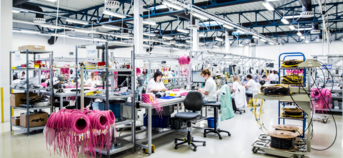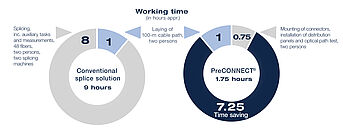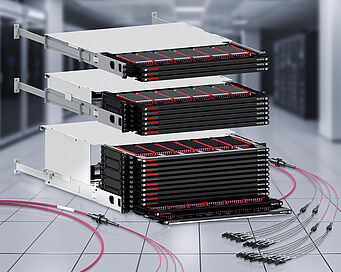Installing the fiber-optic cabling infrastructure: Comparison of costs, failure-proofing, security and handling
Data centers are constantly growing in response to the demands of new business processes and ever increasing data rates. The IT cabling infrastructure is the basis for trouble-free data transfer and the reliable interaction of all the active components and applications in the data center. This makes professional installation all the more important. The shortage of skilled labour is currently a major challenge. If tasks are entrusted to insufficiently qualified personnel then this increases the risk of human error and consequently of data center downtimes and malfunctions.
Cost-efficiency is also playing an ever more important role. Outlay should be kept to a minimum in terms of both time and costs. One key factor alongside cost-efficiency when planning a new data center or extending or expanding an existing one is that it should be ready for occupation and commissioning as quickly as possible.
Various methods can be used to install the fiber-optic cabling in a data center. A number of criteria need to be considered when choosing the installation method.
This blog focuses on comparing a single-fiber splice solution with a factory-assembled plug-and-play fiber-optic cabling system.
Table of contents:
- Definition: Factory-assembled fiber optics vs. (single-fiber) splice solution
- Handling and professional testing of fiber-optic cabling
- Failure-proofing and security of factory-assembled fiber-optic cabling vs. splice solutions
- Economic comparison: Time- and cost-efficiency
- Influence of the application environment on the installation method







